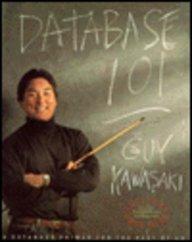Question
CONVERT TO PYTHON Char: 1. In the class charArray, define a static main function with return type void. 2. Define parameter with string array. 3.
CONVERT TO PYTHON
Char:
1. In the class charArray, define a static main function with return type void.
2. Define parameter with string array.
3. In the main, declare an array with type char and initialize with char elements.
4. Use for loop to print.
Int:
1. In the class intArray, define a static main function.
2. Have the return type be void and parameter with a string array.
3. In the main, declare an array of type integer and allocate memory for 4 integer elements.
4. Add integer values to the array.
5. Run a for loop and print the array values.
Short:
1. In the class shortArray, define a static main function.
2. Have the return type void and parameter with a string array.
3. In the main, declare an array for type short and allocate memory for 4 short elements.
4. Add short values to the array.
5. Run the for loop for the array length.
6. Print the array values.
Long:
1. In the class longArray, define a static main function.
2. Have the return type void and parameter with a string array.
3. In the main, declare an array of long type and allocate memory for 4 long elements.
4. Add long values to the array.
5. Run the for loop for the array length. 6. Print the array values.
Byte:
1. In the class byteArray, define a static main function.
2. Have the return type void and parameter with a string array.
3. In the main, declare an array of int type.
4. Allocate memory for 4 integer elements.
5. Fill the array with integer values.
6. Run a for loop for the array length and print the array values.
Float:
1. In the class floatArray, define a static main function.
2. Have the return type void and parameter with string array.
3. In the main, declare an array of type float.
4. Allocate memory for 4 float elements.
5. Fill the array with float values.
6. Run a for loop for array length and print array values.
Double:
1. In the class doubleArray, define a static main function.
2. Have the return type be void and parameter with string array.
3. In the main, declare an array of type double.
4. Allocate memory for 4 double elements.
5. Fill the array with double values.
6. Run a for loop for the array length and print array values.
Real:
1. In the class realArray, define a static main function.
2. Have the return type be void and parameter with string array.
3. In the main, declare an array of type double.
4. Allocate memory for 4 double elements.
5. Fill the array with double values.
5. Fun a for loop for the array length and print the values by using a format function that gives precision depending on the percent number.
Double precision:
1. In the class dprecisionArray, define a static main function.
2. Have the return type be void and parameter with string array.
3. In the main, declare an array with type double.
4. Allocate memory for 4 double elements.
5. Fill the array with double values and print the values by using a format function that gives precision depending on the given percent.
Fixed:
1. In the class, fixedArray, define a static main function
2. Have the return type be void and parameter with string array.
3. In the main, declare an array of integer type and allocate memory for 4 integer elements.
4. Fill the array with integer values.
5. Run using a for loop to find the array length and print the array values.
Boolean:
1. In the class, booleanArray, define a static main function.
2. Have the return type be void and parameter with string array.
3. In the main, declare an array of boolean type.
4. Allocate the memory for 4 boolean elements.
5. Fill the array with boolean values.
6. Run using a for loop to find the array length and print the array values.
Reference:
1. In the class, referenceArray, define a static main function.
2. Have the return type be void and parameter with string array.
3. In the main, declare an array for reference data.
4. Allocate the memory for it.
5. Fill the array with the values and run using a for loop for the array length.
6. Print the array values.
Step by Step Solution
There are 3 Steps involved in it
Step: 1

Get Instant Access to Expert-Tailored Solutions
See step-by-step solutions with expert insights and AI powered tools for academic success
Step: 2

Step: 3

Ace Your Homework with AI
Get the answers you need in no time with our AI-driven, step-by-step assistance
Get Started


